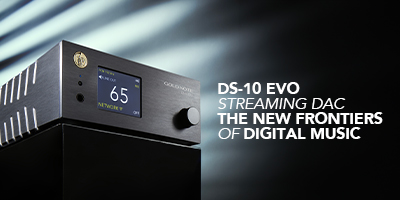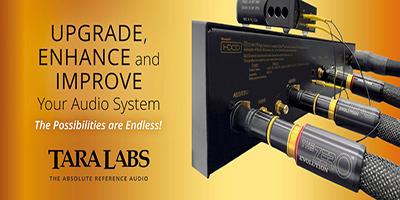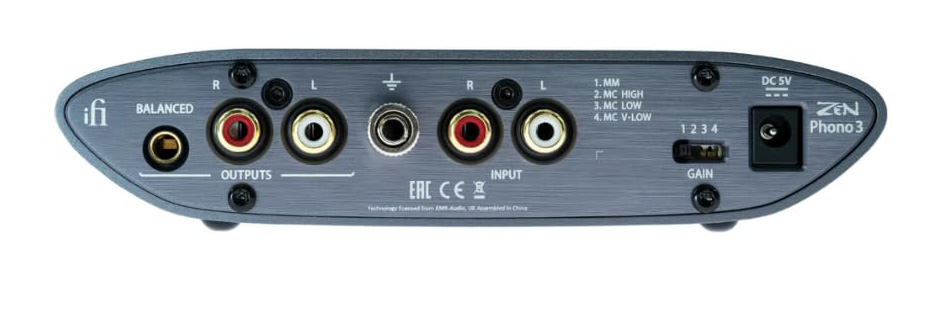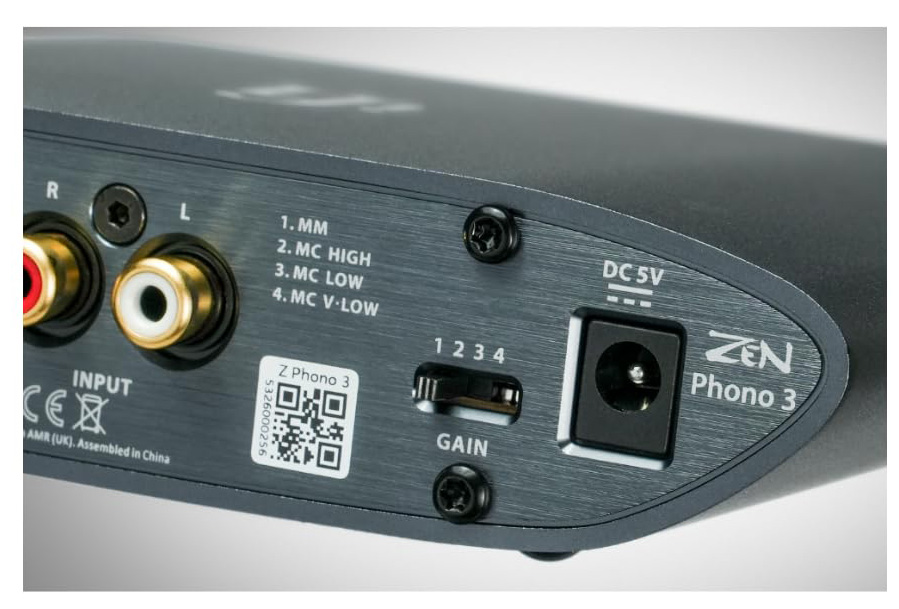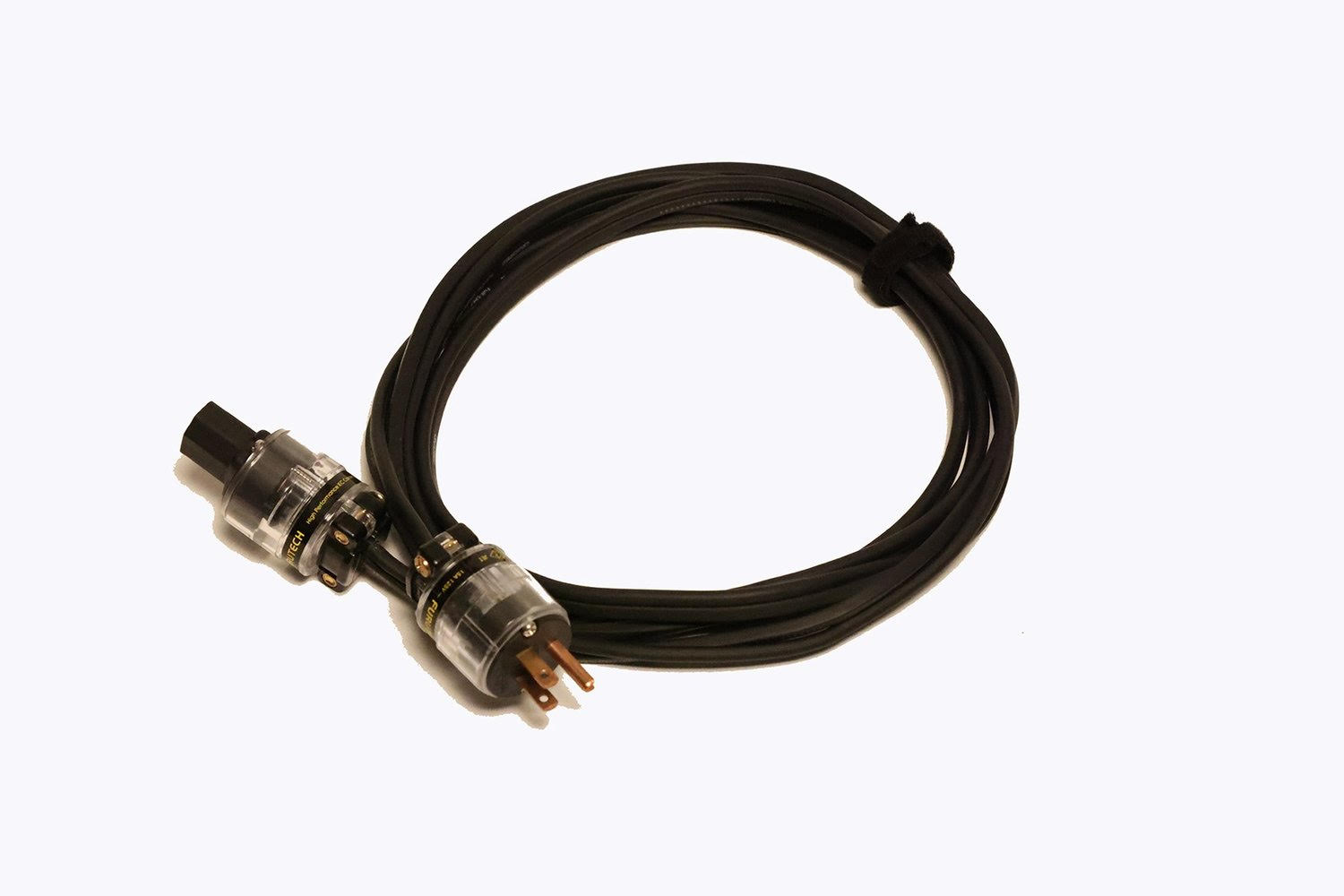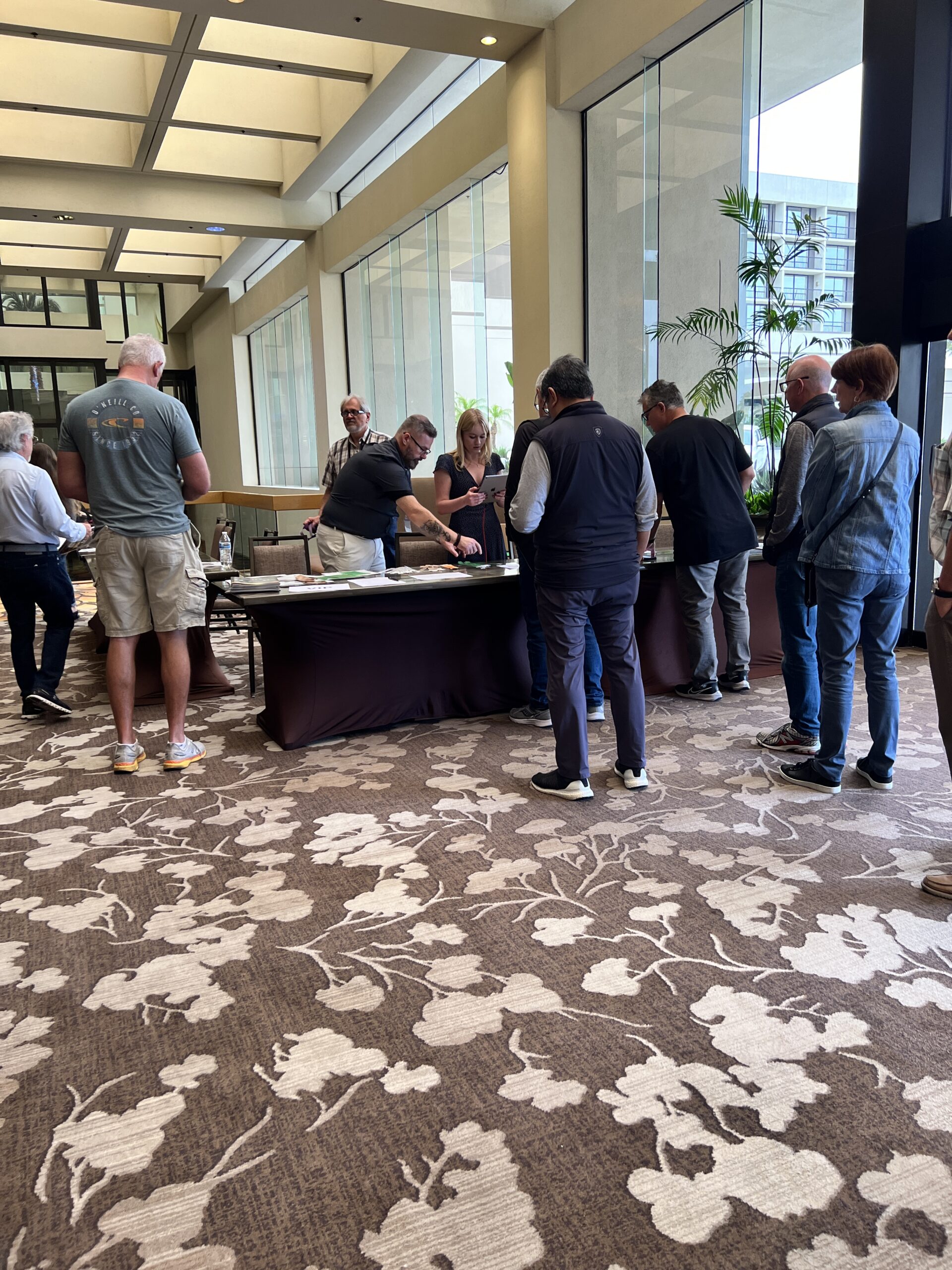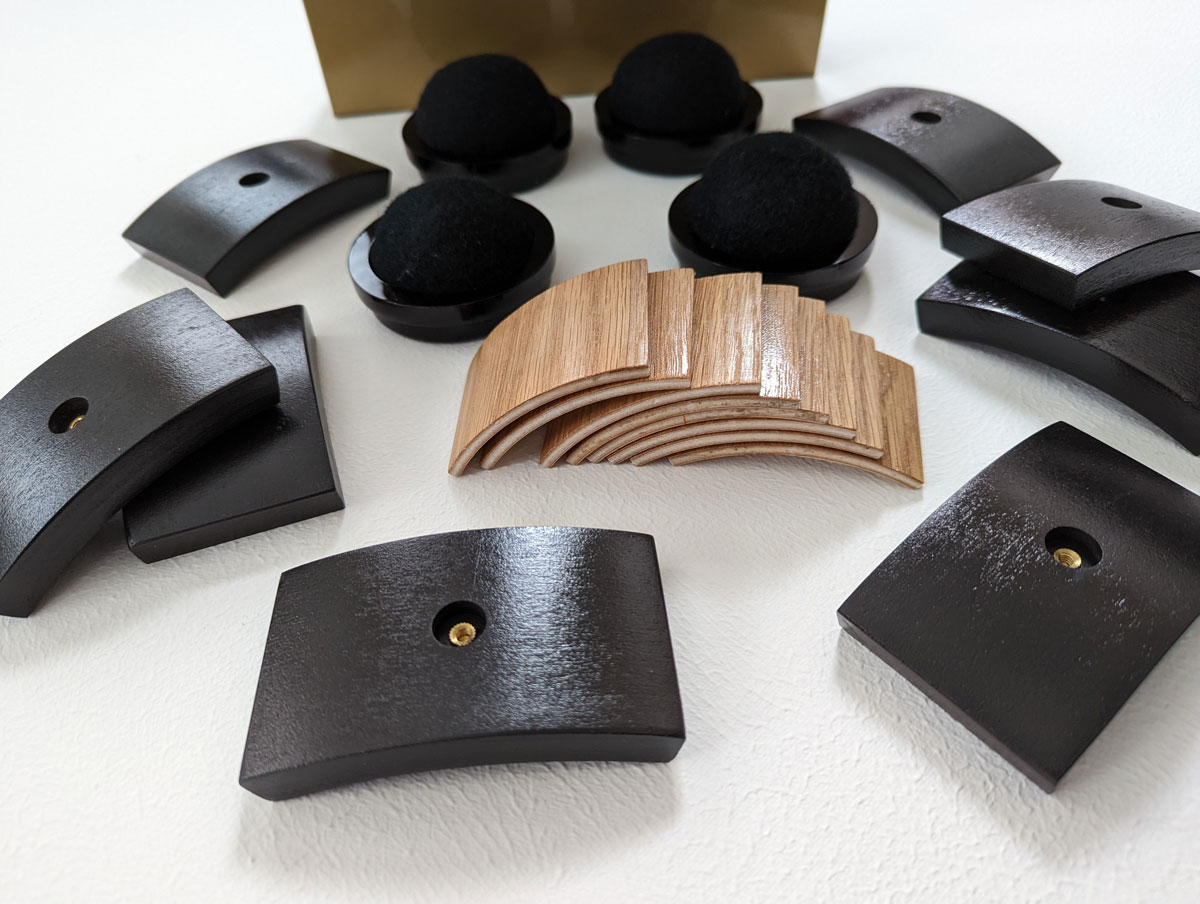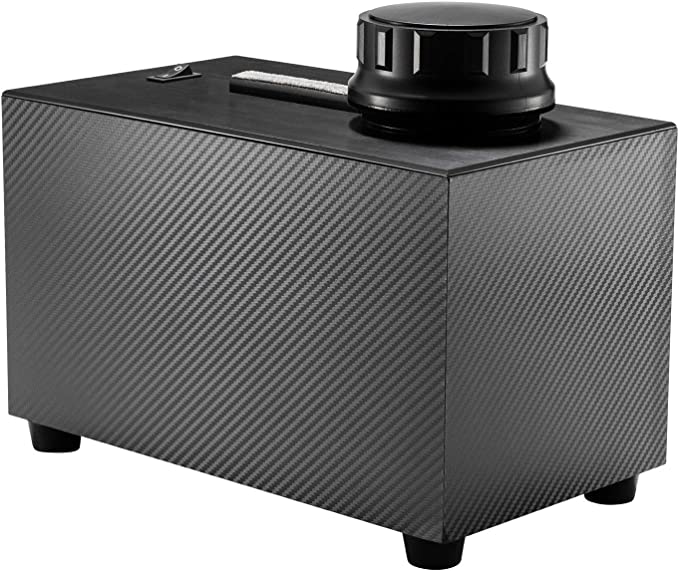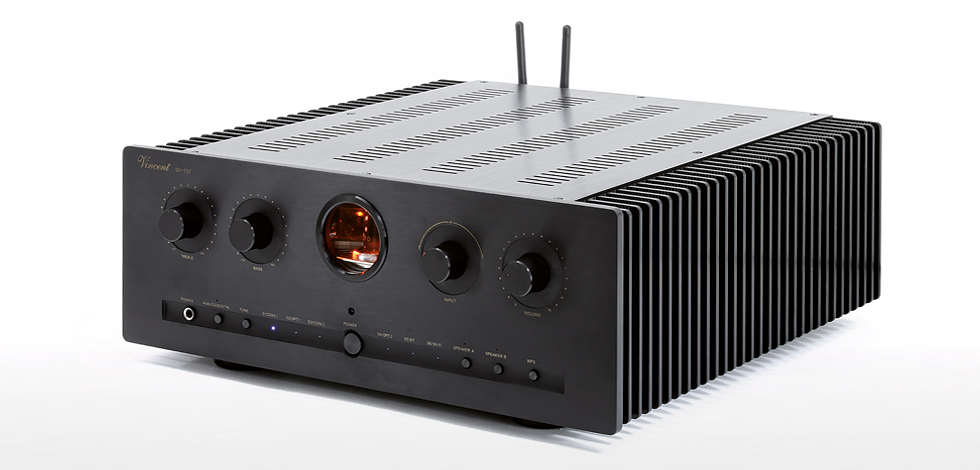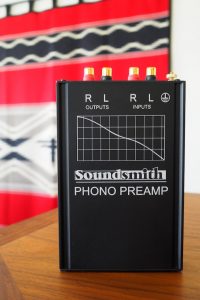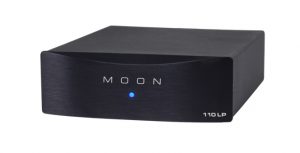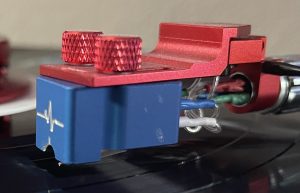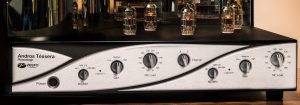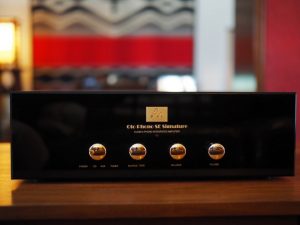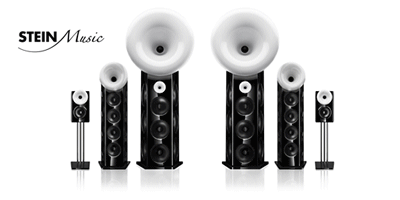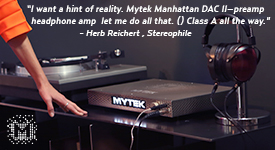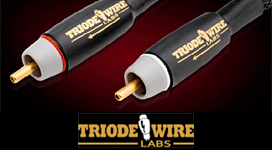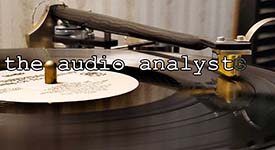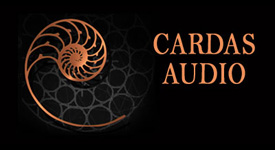The last product I reviewed from iFi was their GoBlue. It is a wireless intermediary between your source and headphones. It works great. That one was a keeper. It gets its fair amount of use from my Android phone to my system when the mood for the sounds of Bluetooth rears its homely little head in our household. When our dear editors sent a shout out for a reviewer or two for a review of iFi's Zen phono I stuck my hand up quickly. Something I never did in high school mind you. I got lucky. That didn't happen too much in high school either. All that was left to do was to receive the package, slip it into my system for a little break in, and sit down and write. Sounds easy doesn't it? As it turns out the little Zen is quite easy to install and set up. There is a gain switch in the back of the unit and loading options at the press of a button on the front. It even has a subsonic filter, a balanced output, and an outboard power supply. All these adjustment options are good news for me. I own a 50-year-old Denon DP-1100 fitted with a Grado Black MI cartridge. My second table is a Kuzma Stabi, with a Hana high output MC cartridge mounted to it. All those adjustments proved really helpful when setting up the Zen phono and moving it from table to table. By the way, I bought the Denon in 1975 from a store in La Puente, California called Federated. Does that bring back memories for some of you? I was digging around in my garage the other day and I found the original manual and receipt for that old table. But that's a story for another day.
For break in I played a lot of records just for the love of hearing the music. LPs such as Rude Boy Ska and Ska on Trojan records and one of my obscure favorites from Goldband Records, Swampland Jewels with some mighty fine Cajun music to name a few. Some of these records are not going to win awards for sound quality, but they sure are fun to listen to.
Punching in to the time clock with my Marantz PM15S1's phono section to the Denon DP-1100 with the Grado Black I heard a slightly warm, full, and pleasant sound with plenty of detail, but without any undue sharpness. I thought this slightly romantic sound is just what you want when playing records. The mm/mc phono section of this amp was also modified when The Upgrade Sales did the modification to the amplifier. So it is a cut above the stock unit. But plugging in the Zen phono to the Marantz Denon/Grado set up proved a worthy opponent to the built in Marantz phono section. The Zen sounded clean and detailed, yet not bright. The soundstage while not as deep and wide as my reference unit was spacious with solid images. In fact, the Zen seemed to have a more lit up soundstage if you will. It was as if you were listening to music with your eyes closed and your mind kept telling you that you could see into the soundstage more easily. It was as if the stage was lit up more, but without sounding brighter. Hopefully, I am not the only one to experience that phenomenon. One thing that is easily heard through the Zen phono is pace. It is a strong suit of the Zen unit.
The Zen' sound was definitely a bit more "lit up" compared to the Marantz phono section. It did not sound bright, but the see far into the soundstage with your eyes closed lit up sound. Pace was upped a tick or two. How do manufacturers do that? Certain kinds of resistors or something? This was easily heard on the Alan Parsons song, "You Don't Believe Me" on side two of the Ammonia Avenue album, sung by the great Lenny Zakatek. The bass drum kicks were sounding as if they were hit with a little more muscle and speed than with the other phonos. Again there was a bit more pace here as well. This made the music feel as if you were a bit anxious listening to the music instead of more laid back. The Zen is definitely a bit more of an exciting listen. Certainly not a deal breaker. But this is just what got my attention every time I first switched over to it.
One track that sounded particularly well with the Zen was "One Good Reason," again on the Ammonia Avenue LP sung by Eric Woolfson. Dynamics, pace, and that open stage brought out the percussion instruments in a clean and fast paced way. That is reviewer talk for saying I was really enjoying this track. So far so good played through a 50-year-old record player with a modest cartridge. Let's move over to a more upscale rig.
On to the Kuzma Stabi, Stogi, Hana rig through the Marantz's built in phono section. I at once heard improved spaciousness, depth, and detail, especially in the high frequencies. The bass was solid, and tone sounded more natural and neutral. I have run this phono preamplifier in other systems and wowed a few people with it.
Hooking up the Zen to the Marantz and bypassing its internal phono section the Zen had a taut, clear, and for the most part natural presentation. I am sure the Kuzma and Hana had a hand in the uptick in music quality. But digging deeper I heard a very slight sheen to cymbals not heard on the Marantz phono section or another phono preamplifier I had in house, the Margules FZ47DB. Again this wasn't a deal breaker to me. There were solid images on that dimensional stage with that tight pacing. This was in contrast to the smoother and slightly more relaxed yet detailed Marantz phono section and the Margules Audio Phono preamplifier. Take your pick.
I spun some Robert Plant albums, The Principal of Moments and Now and Zen because I love his music. With the CD counterparts, which I also have, they always sound a bit brighter and brittle, and a bit thin on the top end. Not so with the LPs. At least not to the extent of the CDs. My Marantz and the Zen reproduced these records nicely. The plant LPs sounding way more natural and listenable. One disturbing thought did come to mind as I listened though. Why did I buy so many CDs?
I heard a solid, rhythmic presentation from the Zen, bass sounded full and tight, but the top end sounded a smidge on the brittle side from time to time. The Marantz, on the other hand, surpassed the Zen in stage depth, width dynamics, and realistic timbers and fullness. It even reproduced the sibilance and cymbal hits more realistic and natural. This was also noticed on the Alan parsons LP, Eye in the Sky, on the cut, "Old and Wise" in particular. Hmm, another favorite. I don't know how much Marantz spent on the integration of this phono section going into the PM15S1, but the mod definitely lifted it to another level. The fact that the Zen gave it a real run for its money speaks volumes on the performance of the little Mighty Mouse of a phono preamplifier.
I next tried my Margules FZ47DB phono preamplifier. There are no adjustments on the Margules, or an outboard power supply. You get what you get. With its built-in power supply, just plug and play. The Margules is even more dynamic than the Zen. Not only did I play it through my old Denon/Grado rig, but I also played it through my Kuzma/Hana/Marantz rig for maximum resolution. It does work quite well with my high output Hana cartridge by the way. I used two records from my favorites' file; the Doobie Brothers Stampede album and Tom Johnston's solo effort Still Feels Good. These are my favorites not only for the music, but also because they sing about one of my favorite areas of California on the Stampede LP. The Margules reproduced these disks in an organic, clear, dynamic, and neutral manner. The Margules was slightly more dynamic, more open and with a more dimensional stage, smoother and has a slightly cleaner background than the Zen. I called the Margules a sleeper when I reviewed it some time back. And it has been holding up that reputation quite well. But the Margules is more expensive than the Zen though with less features.
Switching over to the Zen this music sounded clean and neutral, but for the most part full-bodied. I did notice a very slight thinness peek its head up from time to time in the upper frequencies. But it wasn't consistent. Otherwise, the frequency spectrum was well balanced. It has a clean high end, neutral midrange, and a taut solid bass. Bass doesn't shake the foundation, but it is solid and blends well with the rest of the frequencies. The Zen doesn't drag down the music one bit. The finger picking of Pat Simmons on the song, "Slat Key Soquel Rag" is a perfect example of the taut, clean, and quick pacing this phono is capable of. This aspect of its performance made the music that much more fun to listen to. The Zen is also capable of easily revealing the sound quality and character of different recording.
It should be no surprise that iFi has come out with such a high-quality product. Just look at their track record. This is also something I can attest to with my GoBlue unit. I know I have been very hard on the Zen phono pitting it up against two other phonos that are more expensive and high achiever, but the Zen phono proved more than capable of delivering high quality music reproduction off of all the vinyl I threw at it. It reproduces what was in the grooves in a clean, spacious, dynamic, fast paced way. For the most part it also reproduced the tone and timber of the music with very few anomalies. The fact that it is built with flexible adjustment options and is very affordable, makes this phono preamplifier that much more alluring.
Zen Phono
Retail: $249
iFi Audio
105 Professional Pkwy, Ste.1503 Yorktown, Pa., 23693
1211 Park Ave. Ste. 102, San Jose, Ca. 95126
1.800.799.4342

